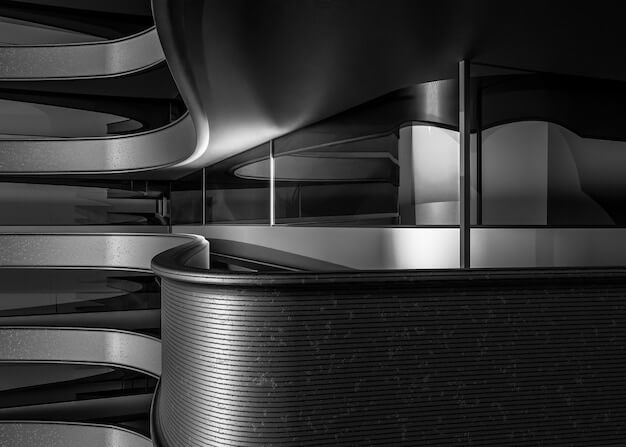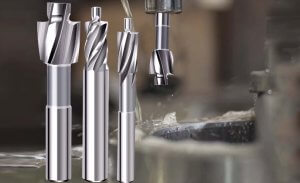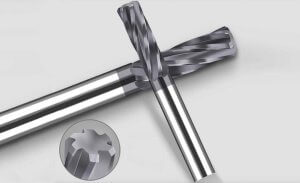The Aerospace Industry and the Significance of Component Materials
In the aerospace industry, the selection of materials plays a significant role in achieving efficiency while maintaining safety standards. The components’ materials need to withstand harsh environmental conditions like extreme temperatures, pressures, and high-speed movements. Consequently, metals have traditionally been preferred due to their durability and resistance. However, recent advancements in composite technology propose an appealing alternative for aerospace applications. Composites, constituted from two or more different materials, exhibit qualities like strength, light weight and corrosion resilience which hold great promise in this field.
Brief Introduction to CNC Machining in Aerospace Applications
Computer Numerical Control (CNC) machining has revolutionized precision manufacturing processes in the aerospace industry. It involves using computers to control machine tools with a high level of accuracy, providing immense flexibility and reducing human error likelihood. In aerospace applications, CNC machining is utilized extensively for both metal and composite component production. Whether the task requires cutting complex shapes out of titanium alloys or shaping carbon fibre composites into intricate patterns, CNC machines can accomplish it consistently and precisely – bridging the gap between traditional and advanced component materials.
Understanding CNC Machining
CNC (Computer Numerical Control) machining serves as a cornerstone in manufacturing processes, notably in the aerospace industry. It is a pre-programmed software methodology that guides factory tools and machinery to enable precise control during the production process. The main advantage of this method lies in its ability to manufacture complex shapes that would otherwise be impossible using manual operation.
- High Precision: By eliminating the possibility of human error, CNC machines ensure high accuracy levels consistently over time.
- Reduced Production Time: As these machines can work tirelessly around the clock with minimal supervision, it results in significant reduction of production time.
- Versatility: Regardless of whether composite materials or metals are used, CNC machining demonstrates remarkable flexibility in handling diverse applications.
For instance, within the aerospace industry, CNC machining contributes significantly to producing intricate parts like turbine blades that demand meticulous precision while bearing intense environmental conditions. Thus, understanding the nuances of CNC machining opens up avenues for optimizing manufacturing solutions in aerospace applications more efficiently.
Metals in Aerospace Applications
In the aerospace industry, a variety of metals are commonly used for their unique properties. Aluminum, prized for its lightweight nature and good formability, is often employed in the body structures and engine parts. Steel offers great strength and durability, making it ideal for critical components like landing gears. Titanium, known for its exceptional resistance to heat and corrosion, finds frequent use in engines and exhaust systems. These metals, due to having high durability and thermal resistance, prove invaluable in withstanding extreme conditions typically encountered in aerospace applications.
A case study exemplifying this would be the utilization of titanium in jet engines. The Pratt & Whitney’s PW4000 112-inch engine – used extensively in commercial aviation, features a high-pressure compressor made significantly from titanium. This allows the engine to function reliably under high temperature and pressure conditions, proving how invaluable metals are in aerospace applications.
Composites in Aerospace Applications
Composite materials, such as fiber-reinforced plastics (FRPs) and carbon fibre, are increasingly used in aerospace applications due to their distinct advantages over traditional metals. These composite materials are made up of two or more constituent materials with different physical or chemical properties which, when combined, produce a material with characteristics unlike the individual components.
- Fiber-Reinforced Plastics: Made by embedding fibres of glass, carbon, aramid or other materials into a plastic matrix, FRPs offer high strength-to-weight ratios.
- Carbon Fiber: Known for its light weight, high tensile strength and low thermal expansion, carbon fiber has become a go-to material in aircraft construction.
The key benefits of using composites over metals in aerospace applications include lightweight, corrosion-resistance, and fatigue resistance. The Boeing Dreamliner 787 is a prime example where composites account for more than 50% of the total structure including the fuselage and wings, contributing to significant fuel efficiency.
Bridging the Gap between Metals and Composites
In aerospace applications, CNC machining plays a crucial role in bridging the gap between metals and composites. Let’s explore the differences between these materials:
1. Metals:
- Metals, such as titanium and aluminum alloys, are widely used in aerospace CNC machining.
- These materials offer high strength-to-weight ratios, making them ideal for aircraft components.
- Metals provide excellent structural integrity and durability, ensuring the safety and reliability of aerospace parts.
2. Composites:
- Composites, including carbon fiber, fiberglass, and plywood, are also used in aerospace CNC machining.
- These materials offer lightweight properties, contributing to fuel efficiency and reducing overall aircraft weight.
- Composites provide excellent strength and stiffness, making them suitable for various aerospace applications.
By utilizing CNC machining, aerospace manufacturers can effectively work with both metals and composites to create high-quality and functional parts. To learn more about CNC machining in aerospace applications and gain valuable insights into manufacturing processes, you can refer to our Knowledge Base. For professional CNC machining services and expert advice, you can rely on our CNC machining services.
Bridging the Gap between Metals and Composites: Innovative Solutions in Aerospace Applications
Over time, there has been a discernible shift towards developing composite materials due to their high strength-to-weight ratio and superior corrosion resistance compared to traditional metals. However, challenges with machining composites such as poor surface finish and excessive tool wear have remained a concern. To bridge this gap, innovative solutions that integrate both material types in aerospace components are emerging.
- The advancement of CNC technology plays a vital role in enhancing machinability, reducing costs associated with complexities in machining composites, and mitigating the drawbacks of metals such as higher weight and susceptibility to rust.
- New hybrid composite-metallic materials are being developed, combining the benefits of both composites and metals while eliminating or reducing their individual shortcomings. These hybrids promise the strength and durability of metals coupled with the lightweight nature of composites, providing an optimal solution for the aviation industry.
- The use of high-speed machining techniques particularly in milling applications, advanced cutting tools made from polycrystalline diamond (PCD) or cubic boron nitride (CBN), and implementation of effective cooling systems contribute to improvement of machinability parameters including surface roughness and dimensional accuracy.
In terms of future trends, it is predicted that advancements in CNC machining will continue driving the increased usage of composites over metals. At the same time, research on further improving composite machinability and the development of newer hybrid materials is likely to be at the forefront of aerospace manufacturing innovations.
Other Articles You Might Enjoy
- Applications and Advantages of Bronze CNC Machining
1. Introduction: The Enduring Allure of Bronze in CNC Machining In this opening section, we explore the timeless appeal of bronze as a material for CNC machining. From its rich…
- The Pros and Cons of Using Copper Alloys in CNC Machining Projects
Introduction to Copper Alloys and CNC Machining In the realm of materials suitable for manufacturing operations, copper alloys have emerged as a viable contender. Noted for their excellent thermal conductivity,…
- The Multifaceted Applications of Bead Blasting in CNC Machining
1. Introduction: Unveiling the Versatility of Bead Blasting In this opening section, we introduce the concept of bead blasting in CNC machining and set the stage for an in-depth exploration…








